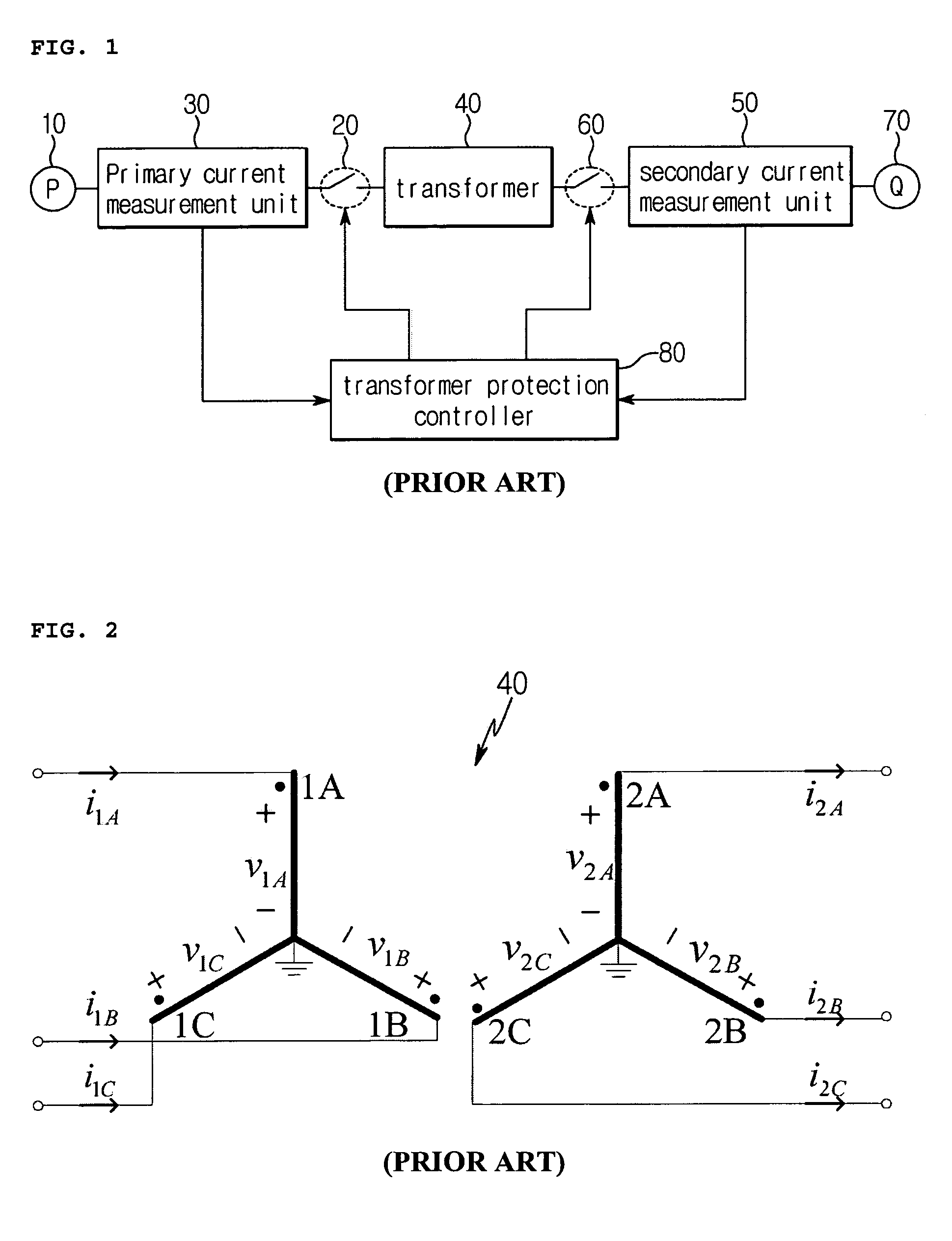Compensated current differential relaying method and system for protecting transformer
a transformer and differential relaying technology, applied in emergency protective circuit arrangements, instruments, measurement devices, etc., can solve problems such as the limitation of methods, different currents, and need a substantial amount of tim
- Summary
- Abstract
- Description
- Claims
- Application Information
AI Technical Summary
Benefits of technology
Problems solved by technology
Method used
Image
Examples
case 1
[0084] Energization Angle of 0 deg, 0% Remanent Flux, No Load
[0085]FIG. 8 shows the results for Case 1 according to the conventional differential current relay (left) and the present invention(right). The transformer is energized at 29.2 ms. In this case, the energization angle is zero and consequently the core was deeply saturated. The conventional differential current relay enters its operating region(see left in FIG. 8) and activates a trip signal at 5.2 ms after energization, but the present invention detects the start of saturation at 33.9 ms and calculates that the initial core flux was 345.4V. Equation (10) is used to calculate λ(t), and im(t) is obtained by inserting λ(t) into the magnetization curve. Therefore, when ic(t) and im(t) are subtracted from the measured differential current, the resulting compensated differential is reduced to a very small value and thus the relay does not enter the operating region and the trip signal remains inactive to correctly discriminate t...
case 2
[0086] Energization Angle of 0 deg, 80% Remanent Flux, No Load
[0087]FIG. 9 shows the results for Case 2 according to the conventional differential current relay (left) and the present invention (right). Since the energization angle is zero and the remanent flux is 80%, the primary current is forced to a value greater than the above Case 1. For the conventional relay, the relay is forced to enter its operating region and the trip signal is activated at 3.1 ms after energization (see left in FIG. 9). However, the compensated relay according to the present invention detects the start of saturation at 31.5 ms and calculates an initial core flux of 339.3 Vs. The compensated relay then calculates the magnetizing current and the core-loss current and uses them to derive the compensated differential current. Since the value of the compensated differential current remains small, the relay does not enter the operating region (see right in FIG. 9), and the trip signal remains inactive.
case 3
[0088] Energization Angle of 0 deg, 80% Remanent Flux, Full Load
[0089]FIG. 10 shows the results for Case 3 according to the conventional differential current relay (left) and the present invention (right). Since a full load is connected to the transformer secondary, the primary current is forced to a value greater than the above Case 2. Therefore, the differential currents used in the conventional relay and the present invention are similar to those in the above Case 2, whilst the restraining currents are different. The conventional relay issues a trip signal at 3.4 ms after energization, but the present invention detects the start of saturation at 31.8 ms and calculates an initial core flux of 343.8 Vs. Since the value of the compensated current remains very small, the relay does not enter the operating region (see right in FIG. 10), and the trip signal remains inactive.
[0090]These three cases clearly indicate that the compensated relay according to the present invention can discri...
PUM
 Login to View More
Login to View More Abstract
Description
Claims
Application Information
 Login to View More
Login to View More - R&D
- Intellectual Property
- Life Sciences
- Materials
- Tech Scout
- Unparalleled Data Quality
- Higher Quality Content
- 60% Fewer Hallucinations
Browse by: Latest US Patents, China's latest patents, Technical Efficacy Thesaurus, Application Domain, Technology Topic, Popular Technical Reports.
© 2025 PatSnap. All rights reserved.Legal|Privacy policy|Modern Slavery Act Transparency Statement|Sitemap|About US| Contact US: help@patsnap.com



